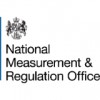
What is power line communication?
A common example of this is the home power-line communication adapters commonly used to transfer broadband from one adapter plug to another anywhere in your home. It doesn’t suffer the problems associated with signal loss from walls and obstructions like WIFI. This makes it a great way to get internet from a source connection downstairs to an office upstairs, which normally would be to far away for WIFI signals to reach.
Its also popular in offices, apartments and hotels with some networks crossing across the threshold of properties via distribution networks and premises wiring. Typically transformers prevent propagating the signal, which requires multiple technologies to form very large networks.
Various data rates and frequencies are used in different situations.
What is BS EN 50561-3:2016 for?
In-home Power line communication apparatus (PLC) use the mains-electricity wiring in the home for communication by injecting differential-mode (DM) signals. However these signals have the potential to cause interference to the operation of radio or telecommunication apparatus.
To control this situation both radiated-emissions and conducted-emissions tests are now specified, and both are necessary as they control different things. EN 50561-3 applies to equipment that uses frequencies including those above 30 MHz in order to communicate. Procedures are given for the measurement of signals generated by the equipment and limits are specified within the frequency range 9 kHz to 400 GHz. No measurement is required at frequencies where no limits are specified.
The radiated emission requirements in this standard are not intended to be applicable to the intentional transmissions from a radio-transmitter as defined by the ITU, nor to any spurious emissions related to these intentional transmissions.
When is BS EN 50561-3:2016 coming out?
latest date by which this document has to be implemented at national level by publication of an identical national standard or by endorsement
(dop) 2016-11-23
latest date by which the national standards conflicting with this document have to be withdrawn
(dow) 2018-11-23
For more information contact us










